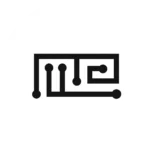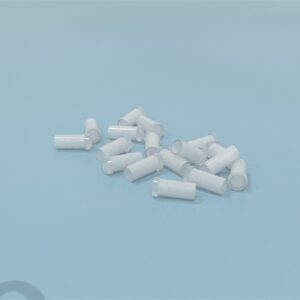$990.00
The Ant Double Y-maze consists of a Y-shaped structure branching into two additional Y-shaped arms. It is designed to investigate decision-making processes and lateralized behaviors in ants.
This maze is an adaptation of the conventional Y-maze used in rodent studies, employing a similar decision-making protocol.
Featuring a single longitudinal entrance channel, the maze includes two symmetrical branching cavities perpendicular to each other. Each branch is equipped with a Y-shaped structure, providing a total of four goal arms for experimental tasks.
Mazeengineers provides the Ant Double Y-Maze for research purposes.

MazeEngineers empowers preclinical neuroscience research with meticulously designed, customizable behavioral apparatuses. From manual classic mazes to fully automated smart systems, we provide the tools scientists need to capture high-quality, reproducible data for studies on learning, memory, anxiety, and depression.



Features |
Length of maze arms: 10mm |
Width of maze arms: 2mm |
Diameter of petri dishes: 230 x 230 x 19mm |

The Ant Double Y-maze serves as a tool for studying decision-making and lateralized behaviors in ants. It features a Y-shaped structure that branches into two additional Y-shaped arms. This maze is adapted from the standard Y-maze used in rodent studies, employing a similar decision-making protocol.
Animals rely on sensory organs to gather information about their environment. These sensory organs are integral to the nervous system, and further investigations explore how asymmetries in the left and right sides of the nervous system influence animal behaviors (Frasnelli, Vallortigara, & Rogers, 2014). The Ant Double Y-maze allows researchers to observe how ants exhibit biased choices towards either the left or right maze arm, offering insights into behaviors linked to their lateralized nervous systems. This maze is valuable for studying decision-making behaviors in ants related to mating, foraging, and shelter-seeking under various experimental protocols. Moreover, it facilitates the evaluation of how diseases, nervous system disorders, brain lesions, and pharmacological interventions affect learning, foraging, and mating behaviors.
Other apparatuses used for assessing ant behaviors include the Ant Binary Tree Maze, the Ant T-Maze, the Ant Double Bifurcation T-Maze, and the Ant Colony Maze.
The Ant Double Y-maze is positioned within a 50 mm x 75 mm x 1.8 mm framework. This maze features a single longitudinal entrance channel and two symmetrical branching cavities arranged perpendicular to each other. Each branch is outfitted with a Y-Maze structure, providing a total of four goal arms. Each arm of the maze measures 10 mm in length and 2 mm in width. Additionally, the apparatus includes large Petri dishes (230 x 230 x 19 mm) placed at the terminus of the four branches to accommodate stimuli.
Wash the perimeter with water after every trial. Appropriately light the maze. A tracking and recording system such as the Noldus Ethovision XT can be used to assist with observations.
Introduce the colony to the entry arm of the Double Y-maze and allow the ants to enter and explore the maze freely. They can make their choices and consume any rewards placed at the ends of the goal arms. Remove each ant from the apparatus after it has made its choice, marking them if necessary. Repeat the trials until 7 ants have been selected from each branching direction.
The specific protocol may be adjusted as needed based on the investigative goals.
Hunt et al. (2018) investigated behavioral lateralization in Temnothorax albipennis using an Ant Double Y-maze. They examined four ant colonies to assess their spatial resolution in relation to their roles within the colony. Additionally, they explored potential correlations between externally observable asymmetries in compound eyes and lateralization.
During the experiments, when colonies were disturbed and introduced to the maze entrance, scout ants sought out new nest sites. Upon entering the branching cavities, 7 ants that selected each secondary branch (left and right) were chosen for analysis. At the conclusion of the trials, 56 worker ants, 18 queens (including 10 from different colonies not involved in the experiment), and 4 males were sampled, euthanized, and their heads were sectioned for microscopic observation of their ommatidia.
Among the 56 worker ants examined, it was found that 45% had more ommatidia in their right eyes, 36% had more in their left eyes, and 20% had an equal number in both eyes. Notably, ants that turned left tended to have more ommatidia in their right eyes, while those that turned right tended to have more in their left eyes, indicating a significant association between eye asymmetry and turning direction. Moreover, males exhibited a higher ommatidia count compared to both worker ants and queens.
The following parameters can be observed on an Ant Double Y-maze:
The Ant Double Y-maze offers a platform for investigating various behavioral assays in ants, including decision-making processes related to mating, foraging, and shelter-seeking. Additionally, it serves as a tool for studying diseases and nervous system disorders in ants. Operating the maze is straightforward, facilitating efficient data acquisition without the need for subject training, which optimizes time utilization.
The presence of residual olfactory cues from previous subjects can impact task performance significantly. Thorough cleaning of the apparatus is essential to minimize these effects. Handling subjects improperly may induce stress or anxiety, leading to disturbances in their behavior. Additionally, task performance may vary based on factors such as age, gender, and strain of the subjects.
There are no questions yet. Be the first to ask a question about this product.